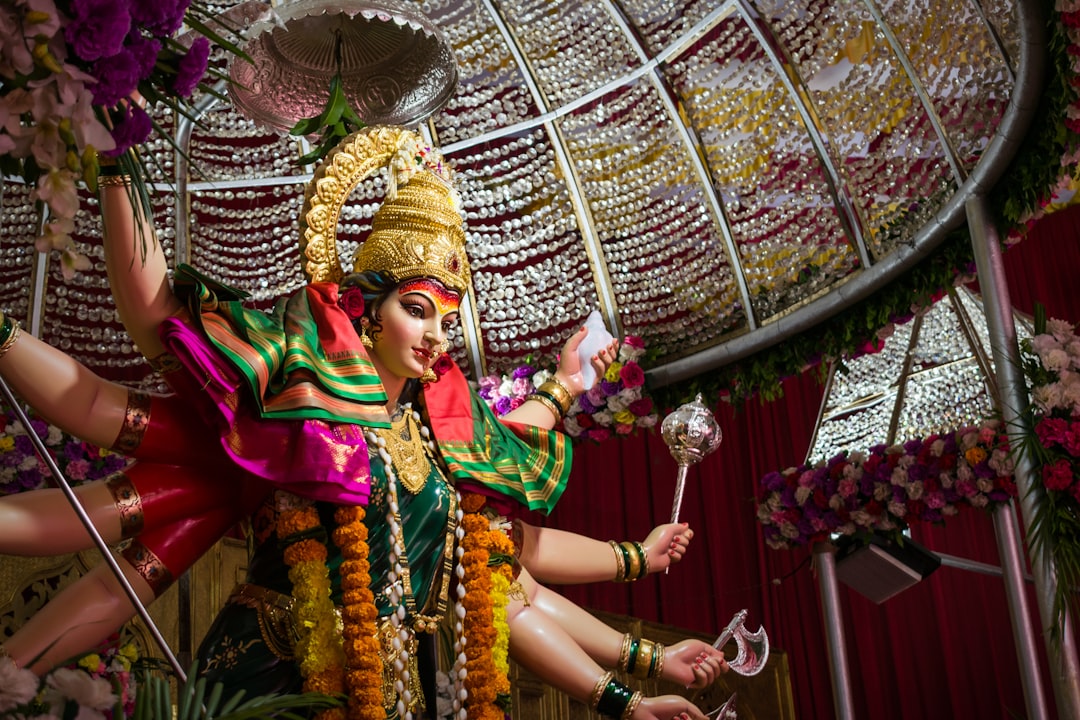In the vibrant tapestry of Hindu mythology, Maa Shakti emerges as a powerful embodiment of divine feminine energy. This primordial force, responsible for creation, preservation, and destruction, has captivated the hearts and minds of devotees for centuries. Let’s embark on a journey to unravel the mysteries surrounding Maa Shakti and explore her profound impact on Indian culture and spirituality.
Buy Airtel DTH with exciting benefits!
Understanding the Essence of Shakti
At its core, Shakti represents the dynamic, active dimension of the Godhead. This feminine energy is the driving force behind the universe’s ability to manifest and evolve. In Hindu cosmology, Shakti is often personified as various goddesses, each symbolizing different aspects of this divine power.
-
The Divine Feminine: Shakti is identified as female energy because it is responsible for creation, much like mothers are the source of life. Without Shakti, the masculine principle, Shiva, is considered lifeless13.
-
The Cosmic Dance: The interplay between Shiva and Shakti is often depicted as a cosmic dance, where the static consciousness of Shiva is brought into dynamic action by the vibrant energy of Shakti23.
Maa Shakti in Hindu Festivals
The worship of Maa Shakti is deeply ingrained in Hindu cultural practices, with festivals and rituals dedicated to honouring her various forms. One of the most prominent celebrations is the Navaratri, a nine-day festival that pays homage to the different aspects of the goddess.
-
Nine Nights of Devotion: During Navaratri, each day is dedicated to a specific form of Maa Shakti, such as Sri Shailaputri, Sri Brahmacharini, Sri Chandraghanta, and others. Devotees engage in fasting, prayers, and rituals to invoke the blessings of the divine feminine24.
-
Spiritual Significance: The festival symbolizes the victory of good over evil and the awakening of the divine feminine within oneself. It is a time for self-reflection, spiritual growth, and the cultivation of inner strength13.
Maa Durga: The Fierce Protector
Maa Durga Shakti, one of the most prominent embodiments of Shakti, is revered as a fierce warrior goddess. According to ancient texts, Durga was created by the collective energies of all the gods to battle the demon Mahisasura, who could not be defeated by any male deity.
-
The Demon Slayer: Armed with weapons gifted by various gods, Maa Durga engaged in a fierce battle with Mahisasura. After nine days of intense combat, she emerged victorious on the tenth day, which is celebrated as Vijayadashami or Dussehra23.
-
Symbolism of Strength: Maa Durga’s triumph over evil symbolizes the power of the divine feminine to overcome obstacles and restore balance. Her iconography, depicting her riding a lion and wielding an array of weapons, serves as a reminder of the strength and courage that resides within every individual13.
The Maa Shakti Serial: A Television Adaptation
The concept of Maa Shakti has also found its way into popular culture through television adaptations. One such example is the “Maa Shakti” serial, which brings the mythological tales and cultural significance of the divine feminine to the small screen.
While specific details about the plot, characters, and cast of the “Maa Shakti” serial are not readily available in the provided research data, such TV adaptations play a crucial role in popularizing and preserving the rich cultural heritage associated with the worship of the divine feminine in India.
Modern Interpretations and Empowerment
In contemporary times, the concept of Maa Shakti has taken on new meanings and interpretations. Beyond the traditional narratives, Shakti is now seen as a symbol of women’s empowerment and the recognition of their inherent strength.
-
Challenging Gender Roles: Modern perspectives challenge the confinement of women to nurturing or destructive roles and advocate for acknowledging their autonomy and power beyond these archetypes13.
-
Spiritual Empowerment: The worship of Maa Shakti encourages individuals to tap into their inner reservoir of strength and creativity. It serves as a reminder that the divine feminine energy resides within everyone, regardless of gender45.
|
Did You Know? – Shakti is the primordial cosmic energy that represents the dynamic forces of creation. – The word “Shakti” literally means “power” or “energy” in Sanskrit. – Shakti is often depicted as a coiled serpent energy, known as Kundalini, that lies dormant at the base of the spine until awakened. – The worship of Shakti can be traced back to ancient civilizations, predating the Vedic period in India. – Shakti is not limited to Hinduism; it also plays a significant role in Tantric and Yogic traditions. |
Maa Shakti, the embodiment of the divine feminine energy, continues to hold a sacred place in the hearts of devotees across India. Through worship, festivals, and cultural practices, the reverence for Shakti has been passed down through generations, serving as a testament to the enduring power of the feminine divine.
As we navigate the complexities of modern life, the wisdom and symbolism of Maa Shakti offer a guiding light. By embracing the strength, creativity, and transformative energy of the divine feminine, we can tap into our inner power and cultivate a deeper connection with the sacred.
For those seeking to delve deeper into the world of Maa Shakti and explore the rich cultural heritage associated with the divine feminine, Airtel Broadband provides a seamless gateway. With high-speed internet and access to a wealth of online resources, devotees can immerse themselves in the tales, teachings, and traditions surrounding Maa Shakti from the comfort of their homes.
FAQs
-
What is the significance of Maa Shakti in Hindu mythology?
Maa Shakti represents the divine feminine energy responsible for creation, preservation, and destruction in Hindu mythology, symbolizing the dynamic power that underlies the universe. -
How is Maa Shakti worshipped in Hindu culture?
Maa Shakti is worshipped through various festivals like Navaratri, where each day is dedicated to a different form of the goddess, involving fasting, prayers, and rituals. -
Who is Maa Durga, and what is her role in Hindu mythology?
Maa Durga is a fierce warrior goddess, an embodiment of Shakti, who was created by the gods to battle the demon Mahisasura and emerged victorious after a nine-day battle. -
Are there any TV adaptations of the Maa Shakti mythology?
Yes, there have been TV serials like “Maa Shakti” that bring the mythological tales and cultural significance of the divine feminine to the small screen. -
How is the concept of Maa Shakti interpreted in modern times?
In contemporary contexts, Maa Shakti is seen as a symbol of women’s empowerment, challenging traditional gender roles and advocating for the recognition of women’s inherent strength and autonomy.



